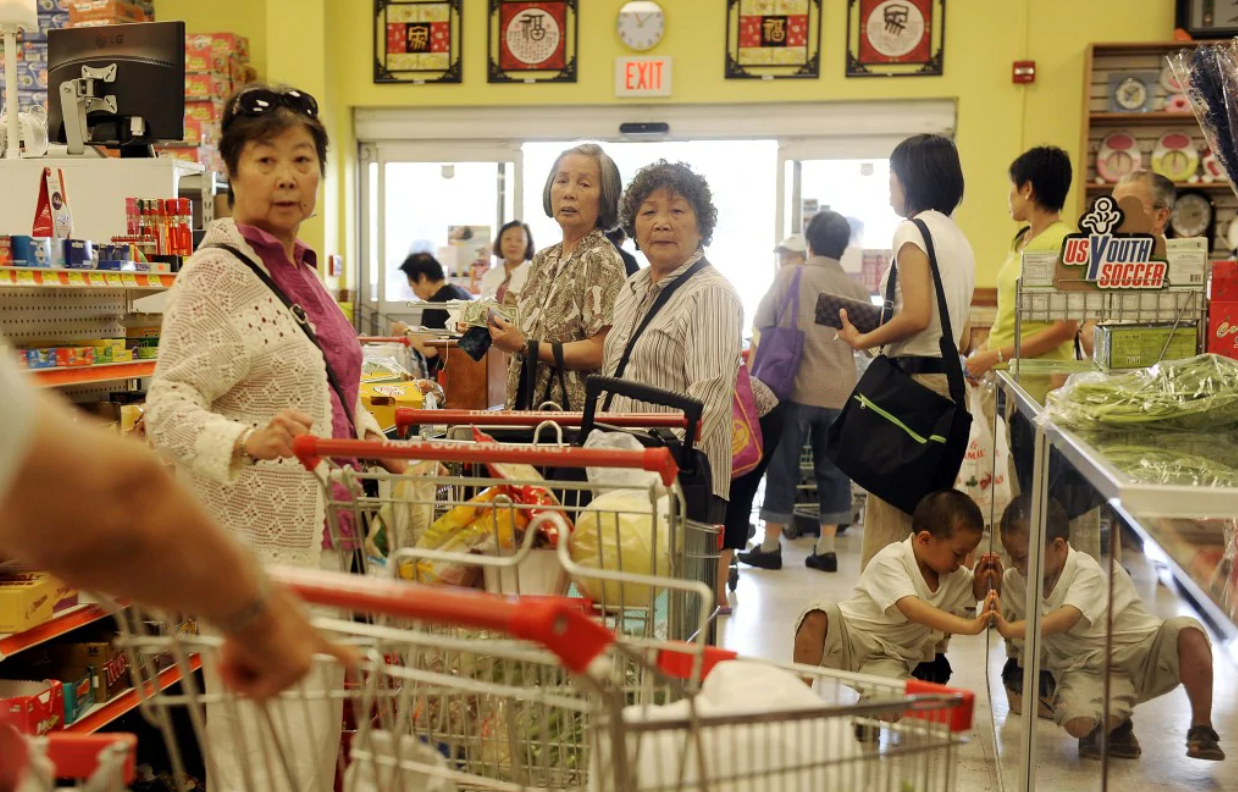Introduction
 Image: Residents of Wah Luck House, a subsidized housing complex that mainly accomodates Chinese senior citizens, shopping in a Chinese grocery store. Because there are no Chinese grocery stores in D.C., they must take a bus 14 miles to Falls Church, VA.
(via Amanda Voisard/The Washington Post)
Image: Residents of Wah Luck House, a subsidized housing complex that mainly accomodates Chinese senior citizens, shopping in a Chinese grocery store. Because there are no Chinese grocery stores in D.C., they must take a bus 14 miles to Falls Church, VA.
(via Amanda Voisard/The Washington Post)
"Gentrification" has morphed into a sort of buzzword nowadays, especially in the case of ethnic enclaves like Chinatown. The safest route of rhetoric for most is to condemn the displacement of low-income and minority residents, while begrudgingly admitting that the process has led to economic rejuvenation in previously stagnant areas. This is certainly the case for Washington, D.C.'s Chinatown; although many deride the downfall of this neighborhood, which once bustled with Chinese-American residents and now seems unrecognizable from any other downtown shopping center, people often concede that the area has seen an economic boom since the advent of redevelopment efforts in the 1970s.
However, I believe that this mode of analysis regarding the displacement of Chinatown's residents is naive at best and outright dangerous at worst. While it is great to hear from members of the Chinatown business elite, many of whom do happen to be Chinese themselves, that redevelopment has been overall beneficial to the local economy, the voices of Chinatown's low-income Chinese and black residents are missing from the conversation. Through my research, I aim to answer the following questions:
- How have residents of affordable housing in the Chinatown area been affected by downtown urban revitalization efforts?
- How has the local response to gentrification in Chinatown changed over time?
- What does it mean to “save Chinatown?”
As I mention in my literature review, there is already a substantial amount of research that has been done about the effect redevelopment efforts have had on D.C.'s Chinatown. However, much of the existing literature focuses on the commercialization of Chinatown, which is more relevant to the Chinese businessowners of Chinatown than it is to the actual residents. As someone who has been displaced by recent development efforts in Chinatown, this project aims to place the residents of Chinatown at the forefront of the conversation -- because without their perspective, it is impossible to understand the full impact gentrification has had on the neighborhood.